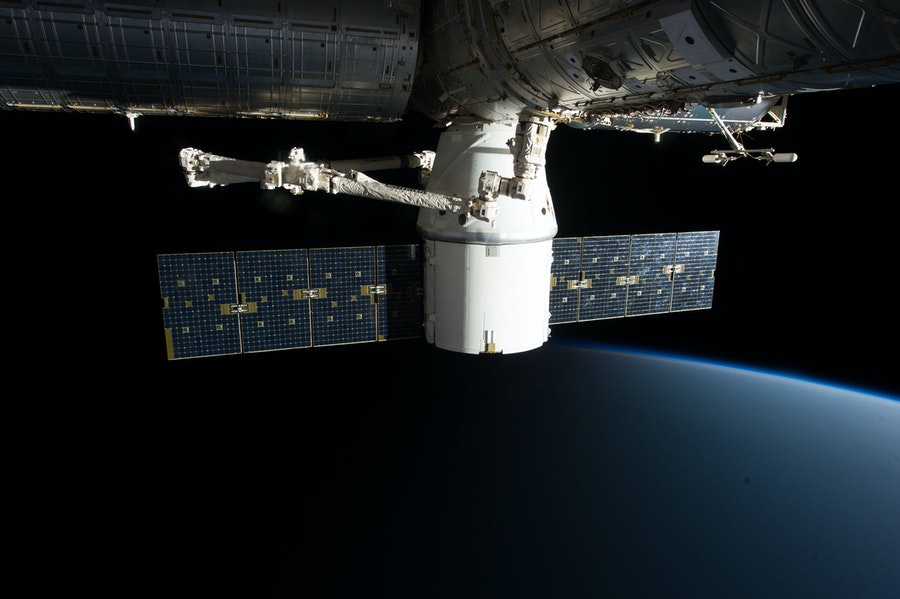CubeSats are small-sized satellites that have been exclusively used in low Earth orbit for over a decade now for communications and remote sensing. However, these satellites are now being designed and utilized for interplanetary missions too. As of 2018, a pair of CubeSats was deployed for a mission on Mars. Additionally, satellite industry considers some of these satellites for exploration missions to Jupiter and the Moon.

When you look at the basic design of a typical CubeSat craft, it does not measure more than 4-inch on all sides. Additionally, it just weighs roughly around 2.93-lbs. However, variations are continuously being added; today, you will find CubeSats larger than 4-inch units for more complicated missions.
CubeSats aim to reduce substantial costs — since they are pretty lightweight, it means less fuel is required for the launch. In most cases, these satellites simply hook on larger rockets that are already carrying a heavier payload; this way, the nanosatellites are merely launched into space without requiring a separate rocket.
However, these nanosatellites did face some design challenges. Since they are smaller, the electronic components were more sensitive to radiation. Additionally, they are unable to carry large payloads with them. Due to their low cost, they last only a few weeks, months, or years before falling back into the atmosphere or ceasing operations.
Benefits of CubeSats
In order to fully understand all profits humanity can get from CubeSats it is imperative to understand why and how the CubeSat camera works. As said before, these are attached to nanosatellites that have typically been used for Earth observation missions. However, they are today being used for interplanetary missions. Modern CubeSats boast components that allow more flexibility and integration to the camera, making them perfect for various projects. Of course, you cannot forget the quick launch option as well.
If you are curious about what types of CubeSat cameras are available, you will be happy to know that there are many! The satellite imagery sector is a large one, and there is a high demand for high-resolution imagery. Sectors that use Earth observation satellite imagery include defense, security, insurance, disaster monitoring, agriculture, civil/energy engineering, and governments.
You will find many image providers in the market today; for instance, some companies may design cameras for high temporal resolution for Earth observation imaging. Alternatively, you also have the choice of fitting commercial imaging systems to these nanosatellites; however, these images will have low spatial resolution and will be labeled unfit for Earth observation applications.
CubeSat satellites are also fitted with hyper-spectral CubeSat camera systems, which can potentially be used for interplanetary projects. There are some possible applications like monitoring geological activity on other planets of our solar system, observing a meteorite environment, landscapes on other planets, etc.
What Is A Miniaturized CubeSat Camera?
As you may have guessed by the name, a miniaturized CubeSat camera is a smaller camera fitted on CubeSat satellites. Cameras are one of the most critical components of these satellites and will determine the entire cost of the unit. Making the camera smaller might save roughly 80% of the cost of the whole project.
One of the advantages of CubeSat cameras is that these CubeSat cameras are often in favor of the iSIM, also called Standard Imager for Earth observation Microsatellites. The onboard processor has a high throughput capacity to deliver the native sub-meter resolution in all the multispectral bands to the customer.
Of course, various other cameras also provide multispectral imaging. However, as the number of bands increases, it will worsen the spatial resolution and the panchromatic imaging. In such cases, the iSIM is considered a better option because it offers much better precision, apart from the small and competitive size.
What Could Miniaturized CubeSat Cameras Bring To The Market?

One of the most critical aspects of miniaturized CubeSat cameras in space is that you will have access to real-time data. A conventional satellite that can cost millions of dollars can change the paradigm of the customer significantly. They will transit from a single large satellite that can be used for many years to a handful of new and cheaper satellites that will be launched periodically, feature the latest technological advancements, and have more revisit times.
In today’s time, such satellites have allowed us even to envision using just three satellites for border monitoring.
Main Problems in the Development Process
Of course, every development process has its problems. Based on various reports, it has been found that extreme precision is paramount if the space camera needs to work at the diffraction limit. Even a slight roughness of 40 nanometers can potentially change the behavior of the camera. Thankfully, the iSIM technology can work through these problems with ease.
Final Thoughts
With the introduction of miniaturized CubeSat cameras, the projected application has become wide-ranging. These camera systems are continuously being developed for more flexibility. They already have various EO applications and can later be used for further exploration as well. It has been anticipated that such space technology camera systems will provide more terrestrial use like nuclear waste monitoring and other interplanetary missions like observing the weather systems and landscape of Mars.
Disclosure: We might earn commission from qualifying purchases. The commission help keep the rest of my content free, so thank you!



